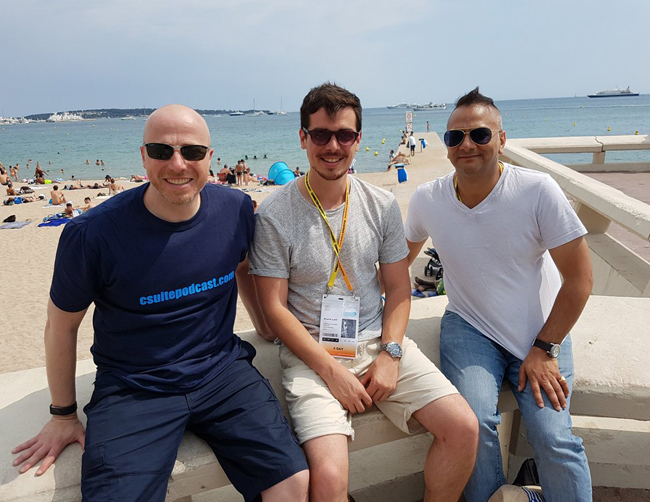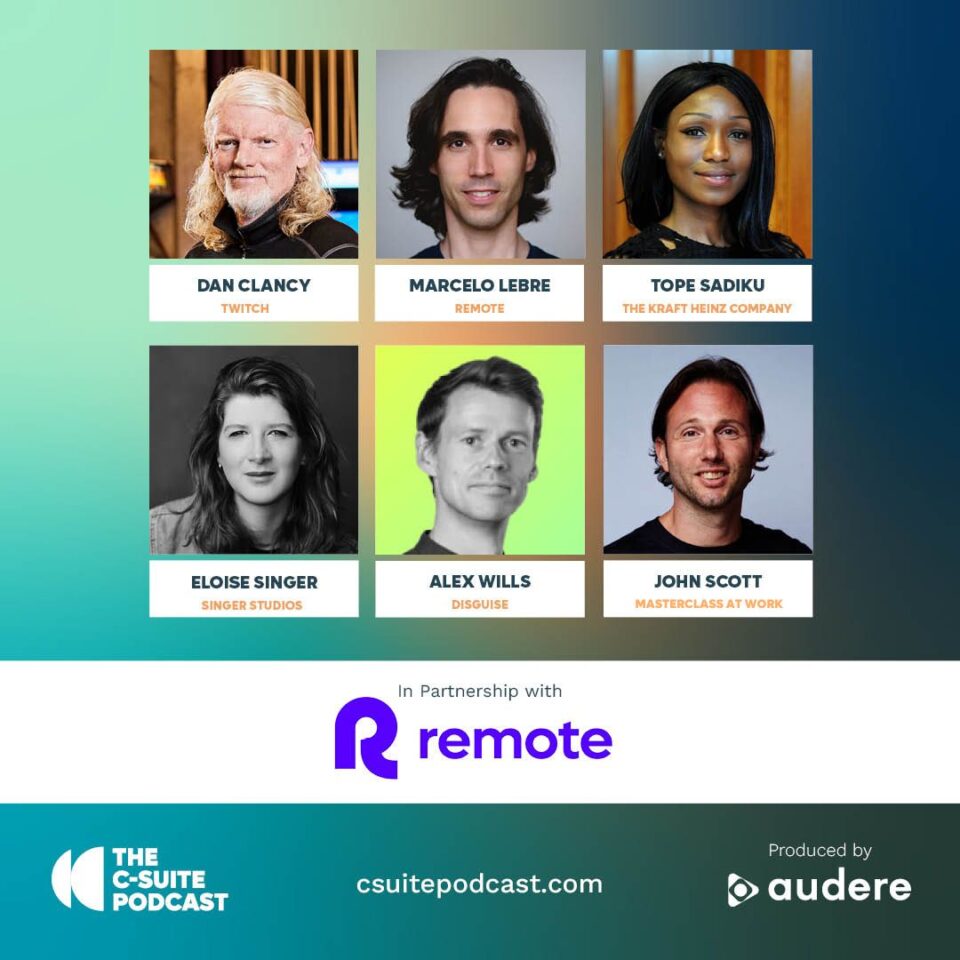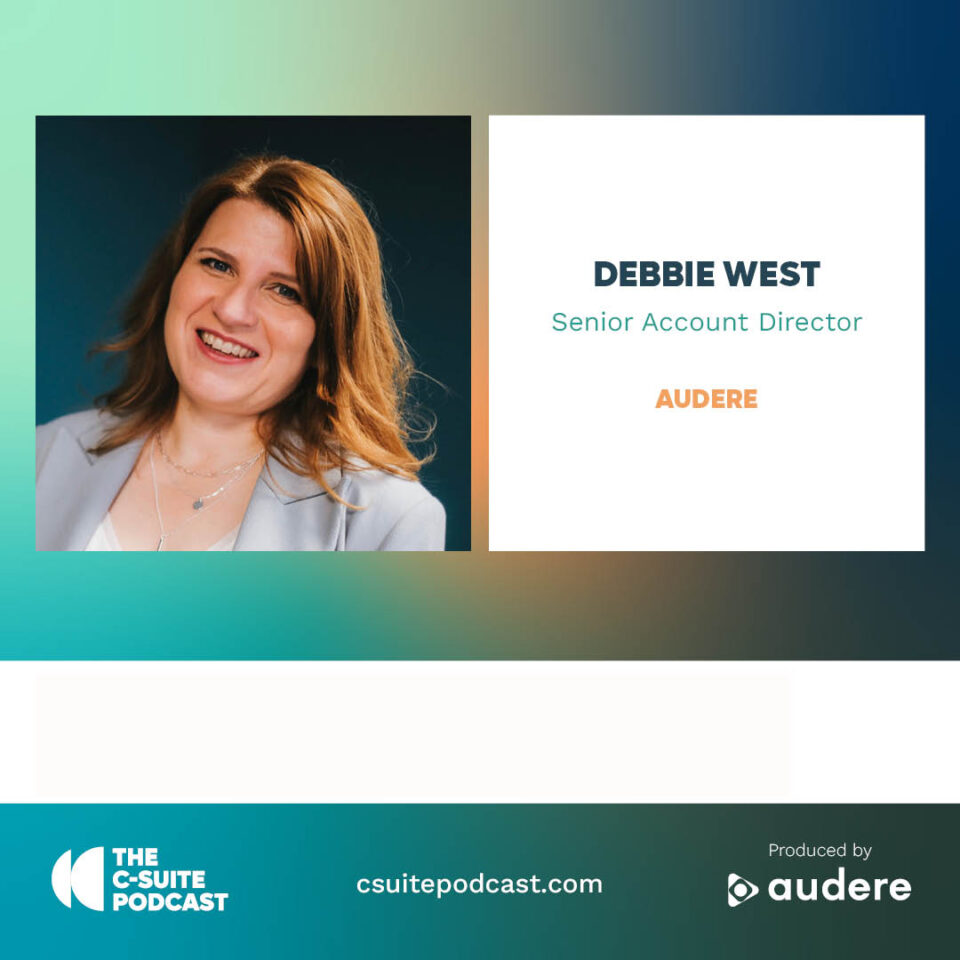
PRCA members receive 10 CPD points for listening to this podcast if they log it on the PRCA CPD programme.
The first of four shows recorded at the Cannes Lions International Festival of Creativity.
In the first interview from Cannes Lions, Russell Goldsmith spoke with Zuleika Burnett, Executive Director for Creative and Innovation at Havas Life Medicom and Body Architect, Lucy McRae, who had presented together on the Inspiration Stage at the Festival, probing healthcare frontiers through convergence of art, technology and health.
Their Cannes Lions talk covered three key aspects: vulnerability, serendipity and exquisite risk.
Zuleika explained that they looked at extremes from the superstars in health, to the speakers at Cannes Lions, to the healthcare heroes, i.e., those on the frontline. She said that art and science fiction can drive culture and innovation and that design thinking can shape the future of health. She was particularly excited to be speaking with Lucy as she felt that lessons can be learnt from the way Lucy approaches creativity and that agencies don’t focus enough on the artistic and creative type of work that she produces.
To understand how creative Lucy is, you simply need to watch some of her work, two examples of which, ‘Make your maker’ and ‘Future day spa’ are below –
MAKE YOUR MAKER Short Film from Lucy McRae on Vimeo.
FUTURE DAY SPA from Lucy McRae on Vimeo.
Lucy said that ‘Make your maker’ was about exploring the extremes of genetic manipulation, that she was curious about the deliberate modification of life and genetic engineering and that she became fascinated in her own genetic makeup. The film is about a woman who uses technology as a liquid, who then blends together gender and ego, like a chef would make a cake, with the aim of cloning her own body and eating it to enhance your senses.
Whilst Lucy admitted that the idea of this is absurd, she said the point is to hover the imagination and question which ‘what ifs?’ could exist. How can we bring in mindsets that design with doubt, as this is seen as a weakness? However, she feels we can use this as a tool or gateway to innovation. She believes that pivotal moments occur when you are out of your comfort zone and told a story of being on a bus in Canada and willingly putting herself in an uncomfortable position as she introduced herself to a NASA economist. He went on to explain that NASA are concerned with the complications of growing a foetus in zero gravity. It was from this time on that she wondered how can we understand far future ideas like zero gravity and how can it benefit health and life now.
Another example of Lucy’s innovative thinking is in the creation of swallowable perfume – a cosmetic pill that works from the inside out. It turns the body into an atomiser and if colour is added too, we sweat cosmetics. Lucy had presented this idea before the market was ready for it but she’s since had interest from cosmetic houses about commercialising the idea.
Bringing this back to the theme of their presentation, Zuleika said that they had referenced six stories from the Havas Lynx healthcare heroes campaign, which show how vulnerability, serendipity, and exquisite risk come to bear.
One example that Zuleika talked through was when the Royal Free Hospital wanted to grow tissue into a human nose and were looking for someone to mould a human nose, so they could grow it biologically. They found Matt Durran, a glass maker. He took on the challenge and went into experimentation mode and came up with an ideal solution that worked. The hospital never thought they would work with an artist and Matt never thought he would work in healthcare. This is an example of Serendipity, which is about beautiful chance.
Both guests had a final message to the industry summing up what we’d discussed:
Lucy was interested in provoking people – are they coming from a place where they want to be or are they coming from a mindset that utilises doubt and vulnerability. What if everyone operates from a place of more risk how would that pan out?
Zuleika said that there are exciting opportunities of how we do things in the future. As designers and innovators in healthcare, they play a role in bringing patients and healthcare workers into their work, and there is a need to break down barriers between agencies and the people on front line.
Part Two starts at 16:20
In the second part of the podcast, Russell was joined by Khalid Latif, Associate Creative Director and Shaheed Peera, Executive Creative Director EU, both of Publicis LifeBrands.
Khalid and Shaheed talked about ‘Malaria No More’, a Pro bono project they are working on, but one that also had an interesting story in how the creative ideas came about, as it links to the hot topic of finding and nurturing new diverse talent in the industry.
Shaheed said that Malaria is the single biggest killer of humans in the world, having wiped out 50% of the population since time began and whilst this claim can’t be necessarily by substantiated, there is still plenty of evidence that it is the world’s biggest killer disease, having claimed billions of human lives. Therefore, as he explained, it has an economic impact on countries and governments across the world but crucially, it can be completely killed in our lifetime with the right resources and finance.
Shaheed said that Malaria No More decided to approach their fundraising differently by wanting to approach CEOs of businesses and inviting them to be part of an exclusive club through which they will contribute towards fundraising for the charity. They therefore needed something very creative that would engage the CEOs and make them pay attention and even shock them.
However, instead of approaching their top in-house creative, Khalid said that Publicis LifeBrands used their initiative called ‘The Lab’ – a programme that has been running for three years – that aims to bring young or old talent into the business from anywhere, whatever they have been doing, from any walk of life, addressing the issue of diversity in the industry. Shaheed added that 86% of those in the industry come from white middle class backgroundsand described The Lab as their version of The X Factor to give an opportunity to people who wouldn’t normally get a chance to work in the creative industry, where they don’t even look at the CVs of people who apply.
The team that worked on Malaria No More included Rosie, who had been living in Ireland with her parents who Shaheed described as looking like Ziggy Stardust, but what was key was that she had drive, passion and desire in abundance. Another member of the team was Sophia who had been unemployed for 18 months before coming across The Lab.
It was from this process that the idea of a film for Malaria No More was generated – a film that needed to shock and, as Khalid explained, to get people to say “What the fuck”.
The resulting idea, given they were targeting high net worth individuals, was to put Malaria ‘out of business’.
I’m all for competition – but I want to put this CEO out of business https://t.co/LRTZ4LQX8T #SecretCEO #GlobalGoals pic.twitter.com/0jnJ7EUdR2
— Richard Branson (@richardbranson) April 25, 2017
Shaheed said that the video was released on World Malaria Day and within the first two weeks, had been shared millions of times, being retweeted by the likes of Richard Branson, Bill & Melinda Gates Foundation, UNICEF, and even Rentokill (which makes sense when you see the video).
Shaheed described the campaign as a huge success, generated from an idea by two girls from diverse backgrounds, who have never worked in the industry before and recommended that all business look at how The Lab works … and do the same!
The Cannes Lions episodes of the csuitepodcast were sponsored by Capstone Hill Search.
Thanks to ICCO for allowing us to carry out the interviews in their House of PR.
All previous shows of the csuitepodcast series are available on the website, Soundcloud, itunes and TuneIn. There is also a growing community on Facebook and Twitter, where you can get involved in the discussion. Finally, if you subscribe to the show, please can you give it a positive rating and review on itunes in particular as this helps it up the charts!




